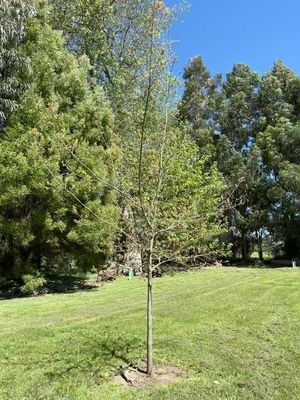


Quercus coccinea
Quercus
Quercus coccinea, common name scarlet oak, is a large deciduous tree. It can be mistaken for the pin oak, the black oak, or occasionally the red oak. On the scarlet oak the sinuses between lobes are "C"-shaped in comparison to pin oak, which has U-shaped sinuses and the acorns are half covered by a deep cap. It is native to the central and eastern United States. It occurs on dry, sandy, usually acidic soils. I grows to 20–30 m tall with an open, rounded crown. The leaves are glossy green, 7–17 cm long and 8–13 cm broad, with seven lobes, and deep sinuses between the lobes. Each lobe has 3–7 bristle-tipped teeth. The leaf is hairless (unlike the related pin oak, which has tufts of pale orange-brown down where the lobe veins join the central vein). The common English name is derived from the autumn coloration of the foliage, which generally becomes bright scarlet; in contrast, pin oak foliage generally turns bronze in autumn. The acorns
are ovate, 7–13 mm broad and 17–31 mm long, a third to a half covered in a deep cup, green maturing pale brown.
129.00 Location C2 Latitude;-38.402315000000 Longitude; 146.051002000000

